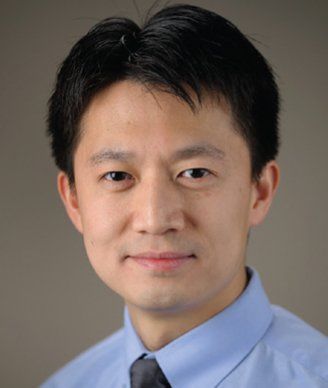Ji Luo Elucidates the CRISPR Gene Editing Technology, and How It May Affect Cancer Therapy in the Future
In this interview we discuss the CRISPR technology currently being used to “edit” genes and when we might see the technology in mainstream practice.
Oncology (Williston Park). 30(10):879.

Ji Luo, PhD

1.Can you describe the CRISPR technology currently being used to “edit” genes?
Dr. Luo: CRISPR is a bacterial endonuclease system that uses an RNA guide to cut DNA in a sequence-specific manner. Currently, the type II CRISPR/Cas9 from the bacteria Streptococcus pyogenes (S pyogenes) is the most widely used CRISPR system for gene editing in human cells. The S pyogenes CRISPR/Cas9 has been successfully deployed to generate both gene knockout and specific mutations, including substitution, insertion, deletion, and translocation in the genome. Compared with other gene editing technologies, such as zinc-finger nucleases and transcription activator–like effector nucleases, the ease of use and the high efficiency of CRISPR/Cas9 makes it a particularly powerful tool for gene editing. Variants of the Cas9 protein have also been created to either silence or activate gene expression without physically altering the genome. In addition to the S pyogenes CRISPR/Cas9, other bacterial CRISPR systems, such as the Staphylococcus aureus CRISPR/Cas9, are being explored for gene editing.
2.How will this research someday translate into clinical practice, specifically for cancer patients?
Dr. Luo: CRISPR is currently used in the laboratory setting to screen human cancer cell lines for drug targets and to create mouse cancer models for preclinical studies. As a direct therapeutic tool, CRISPR has broad applications in gene therapy. For example, CRISPR has been successfully used to correct disease mutations associated with type I tyrosinemia, β-thalassemia, cystic fibrosis, and Duchenne muscular dystrophy in preclinical studies. Furthermore, CRISPR has demonstrated utility in eliminating persistent viral infection from hepatitis B and HIV in preclinical studies. These promising findings provide support for advancing CRISPR to clinical studies. In the cancer arena, one exciting application of CRISPR as a therapeutic tool is to edit the patient’s immune cells to more effectively fight cancer. For example, clinical trials have been planned to knock out the immune checkpoint protein programmed death 1 using CRISPR in patient-derived T cells to stimulate the T cells’ ability to attack cancer cells.
3.Are there currently any barriers to the CRISPR research, financial or otherwise?
Dr. Luo: Like other experimental gene therapies, safety is an important concern with CRISPR. The CRISPR/Cas9 enzyme has an inherent error rate that causes it to generate unwanted, off-target mutations in the genome. Progress has been made to evolve high-fidelity variants of Cas9 with reduced off-target errors. Because CRISPR/Cas9 introduces physical changes in the genome, additional safety measures must be included in CRISPR-edited cells to enable their safe removal from the patient in the event that these cells behave in unexpected ways in the body. When CRISPR is used for direct somatic gene correction in vivo, its effective delivery to the tissue of interest, and how it could avoid triggering undesired immune reactions, are two major challenges. In this setting, shuttle vectors based on adeno-associated virus are promising vehicles for tissue delivery. The current intellectual property landscape surrounding CRISPR technology is complex, and there are several uncertainties associated with CRISPR patent rights that could slow down the commercialization of this technology.
4. When can we expect to see the CRISPR technology in mainstream practice?
Dr. Luo: The first clinical trial using CRISPR to edit cancer patients’ T cells has been approved in the United States. If proven safe, the ultimate hope is that the CRISPR-edited immune cells will become more effective at fighting the patient’s tumor when they are put back into the body. Although gene therapy has faced many challenges in the past, there is cautious optimism that CRISPR will enable a new generation of gene therapy for the treatment of cancer.
Financial Disclosure:The author has no significant financial interest in or other relationship with the manufacturer of any product or provider of any service mentioned in this article.

Late Hepatic Recurrence From Granulosa Cell Tumor: A Case Report
Granulosa cell tumors exhibit late recurrence and rare hepatic metastasis, emphasizing the need for lifelong surveillance in affected patients.